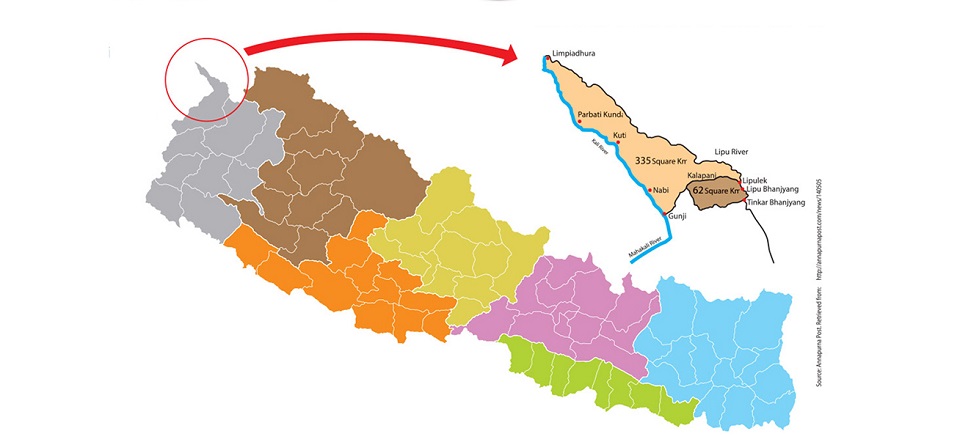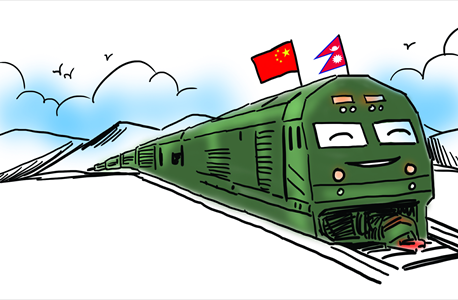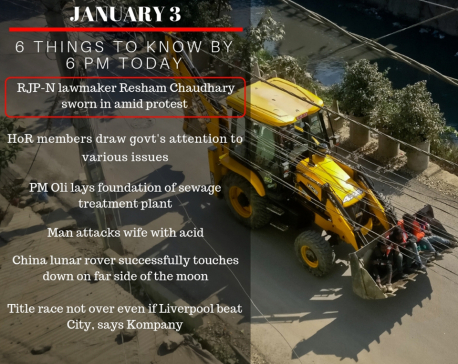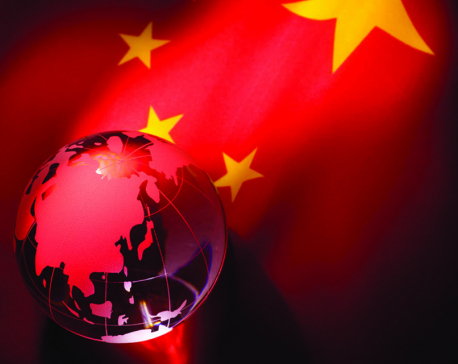
OR
Where does India-Nepal border issue stand now?
Published On: October 8, 2020 02:30 PM NPT By: Bishal K Chalise

More from Author
Nepal understands resolving border dispute is going to be a long struggle. But the ball is in India’s court. Nepalis are warily waiting and watching India’s next move.
Nepal and India now have political maps with overlapping territories that both countries claim to be rightfully theirs. This cartographic dispute has pushed the political relations to a cold stalemate. After witnessing nadir in the relations during Modi’s first term, two countries were hoping that the worst is over and that they can forge mutually beneficial relations during Modi 2.0. Yet, the future trajectory of the relationship remains uncertain.
The recent spat emerged after the Indian government unveiled a new map following the constitutional amendment that changed the status of Jammu and Kashmir and Ladhak. The new map also included the border territories of Kalapali and Lipulekh of western-Nepal. But it is Indian Defense Minister inaugurating the road that passes through the territory under discussion that triggered a response from the Nepali government which resulted in the latter updating its map showing the same territories and, accordingly, updating its constitution.
This is anything but an episodic event thus response should be more than reactionary. The border dispute between the two neighbors is not new and the current piece of land has a complex and long history dating back to early 1800. The suggestion to the contrary is at best a lazy argument and at worst an attempt to malign the relationship between the two neighbors. The discussion should be replaced by a more dispassionate assessment of the actual cause of the misunderstanding.
There is a gaping hole in communication at the political level which is a serious problem. The deficit of trust between the two countries is well known. Nepal feels that India looks down on it as a big brother, micromanaging everything from the internal politics to the economy. India thinks it has the right to do so for protecting its national security. Recently, this came in the form of India imposing economic blockade in 2015 when Nepal did not heed to ‘concern’ from Indian politicians while promulgating the constitution. This ill-conceived action by India shook the psyche of Nepali people and hit the core of Nepal’s insecurity of being a landlocked country.
Current Prime Minister of Nepal KP Sharma Oli was also leading the government in 2015. His perceived determination to look up to India eye-to-eye during the blockade brought him back in power in 2017. Like Modi, PM Oli enjoys a supermajority in the parliament. It would be hard for PM Oli to be seen as ceding to India as much as any other Nepali politician across the spectrum. Hence, it is wise to settle the international border before it becomes another ‘line of actual control’. Given the experience from elsewhere, India had better commence the border dialogue as soon as possible.
Nepal, on the other hand, has made its discontent very clear and has asked for dialogue to resolve it repeatedly. But it seems India has not made up his mind. The major issue for India is that the dispute is now ‘out in the open’, at people’s level, whereas in the past it preferred to negotiate behind the closed doors through hardened bureaucrats as negotiators. While the bureaucrats may still be leading the dialogue process, the settlement now is essentially a political process and political leadership is bound to get involved. This is unchartered territory for both India and Nepal.
At the heart of the problem is the securitization of relationship masquerading as ‘special relation’. The Nehruvian view of Himalayas as India’s security frontier and protection against the middle kingdom has now been breached. South Asia is no longer the exclusive sphere of interests and Nepal, like many other countries in the neighborhood, would like to exercise strategic autonomy to balance-off the influence of big powers.
Hence, the chasm of distrust that exists between the two countries can only be narrowed through confidence-building measures at the highest level. Instead, if India continues with the approach of mobilizing security apparatus for political coercing, as one recent report alleged, then it would be a misstep. Oftentimes India draws its red-line too low, given the disproportionate size and power it enjoys in the neighborhood. The Rajapakchas episode in Sri Lanka has shown that such short term ‘tactics’ to create a ‘favorable’ regime will not work for long.
The first step in revitalizing the relation may be the Prime Minister Modi’s acceptance of the report of Eminent Persons Group (EPG) that was set up by two countries to review the ‘overall’ relations. The report suggests overhauling or replacing the Peace and Friendship Treaty of 1950 with new agreement that redefines relationships accounting for twenty-first-century realities. Business as usual might not be the answer.
Second is to accept that China’s omnipresence is new normal around the world. Its exchanges with Nepal should not be of concern for India than mutual relations between the two countries and it should not see it from a third country perspective or reference. Making Sino-Nepal ties the main line of analysis is utterly unhelpful for both the countries. India-China relation is already too complicated to add Nepal into the mix. For Nepal, it counters the policy of maintaining equal distance between the two neighbors that has been the key motto of its foreign policy for centuries.
The hard reality is Nepal cannot rely on India to help its development aspirations given the frail state of the Indian economy itself. This structural deficiency is also increasingly limiting the coercive leverage that India has exercised in the past. India’s own action has done more to push Nepal toward China than anything else. Make no mistake: Nepal wanted connectivity towards north long before China came up with the idea of Belt and Road Initiatives (BRI). India can compete on delivering on the promises and share its economic dividend with neighbors. This will get sustained and cost-effecting results for India.
Nepal understands resolving border dispute is going to be a long struggle. But the ball is in India’s court. Nepalis are warily waiting and watching India’s next move.
The author is a researcher based in Kathmandu
You May Like This

China seeks clarity on 5 points ahead of DPR
BEIJING, June 21: The fourth Nepal-China bilateral meeting on preparing a Detail Project Report (DPR) for the Kerung-Kathmandu railway concluded on... Read More...

Jan 3: 6 things to know by 6 PM today
Your daily dose of missed important news of the day. ... Read More...

Rise of China in Nepal
In the last 10 years, India is gradually losing its influence in Nepal while Chinese influence has increased at all... Read More...










Just In
- Heavy rainfall likely in Bagmati and Sudurpaschim provinces
- Bangladesh protest leaders taken from hospital by police
- Challenges Confronting the New Coalition
- NRB introduces cautiously flexible measures to address ongoing slowdown in various economic sectors
- Forced Covid-19 cremations: is it too late for redemption?
- NRB to provide collateral-free loans to foreign employment seekers
- NEB to publish Grade 12 results next week
- Body handover begins; Relatives remain dissatisfied with insurance, compensation amount



.JPG)




Leave A Comment